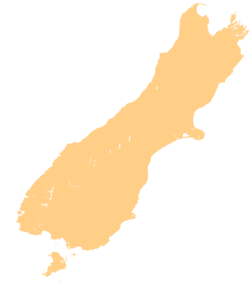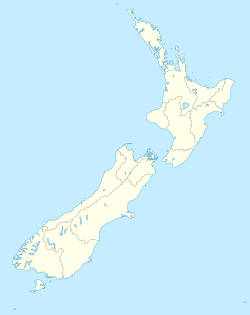Tata Islands facts for kids
| Geography | |
|---|---|
| Location | Golden Bay, New Zealand |
| Coordinates | 40°48′10″S 172°54′45″E / 40.80278°S 172.91250°E |
| Adjacent bodies of water | Golden Bay |
| Total islands | 2 |
| Major islands | Motu (North Tata) Ngawhiti (South Tata) |
| Area | 4.6 ha (11 acres) |
| Highest elevation | 32 m (105 ft) |
| Administration | |
| District | Tasman |
The Tata Islands are two small islands in New Zealand. They are found off the north coast of the South Island. These islands are about 20 kilometers (12 miles) northwest of Takaka. They are in the southeast part of Golden Bay, near Abel Tasman Point. The islands are part of the Abel Tasman National Park. A small town called Tata Beach is just one kilometer south of the islands on the mainland. No one lives on the islands today.
Island Geography and Features
The Tata Islands are quite small. The larger island is called Motu Island, also known as North Tata. It is about 300 meters (980 feet) long and 100 meters (330 feet) wide. Motu Island looks a bit like a flat table. Most of its surface is between 20 and 30 meters high. Its highest point is about 32 meters (105 feet) above sea level.
The southern island is Ngawhiti Island, or South Tata. It is smaller, about 160 by 120 meters (520 by 390 feet). Ngawhiti Island is not as regular in shape as Motu. It also rises to a similar height. You can see several tiny islets and tall rock formations, called sea stacks, off the coast of Ngawhiti Island. The most special rock feature is a large limestone stack at the southern end of Ngawhiti Island.
Marine Life and Wildlife
The waters around the Tata Islands are very important for fish. Many young fish grow up here, making it a "fish nursery." These waters are also popular for people who enjoy kayaking. In the 1990s, there was a plan to make this area a special marine reserve. This would help protect the sea life, but it did not happen.
The islands themselves are home to many birds. They have one of the largest groups of spotted shag birds in New Zealand. These birds are known for their beautiful green feathers and their diving skills.
History of the Islands
People lived on Ngawhiti Island a long time ago. There is proof that Māori people lived there before Europeans arrived. They might have burned some of the native plants. This would have cleared land for farming. Motu Island has more different types of plants. This suggests that no similar burning happened there.
For many years, the islands were important for ships. They offered a safe place for large ships to anchor in Golden Bay. This was the only spot in the bay deep enough for big ships. Around 1904, people started mining limestone on parts of Ngawhiti Island. However, in the early 1900s, the government took over the islands. They did this under a law called the Public Works Act.
From the 1930s, a man named Peter Peterson lived alone on Ngawhiti Island. He was from Norway. Locals called him "The Hermit of South Tata Island." Today, both Ngawhiti Island and Motu Island are uninhabited. No one lives on them anymore.



